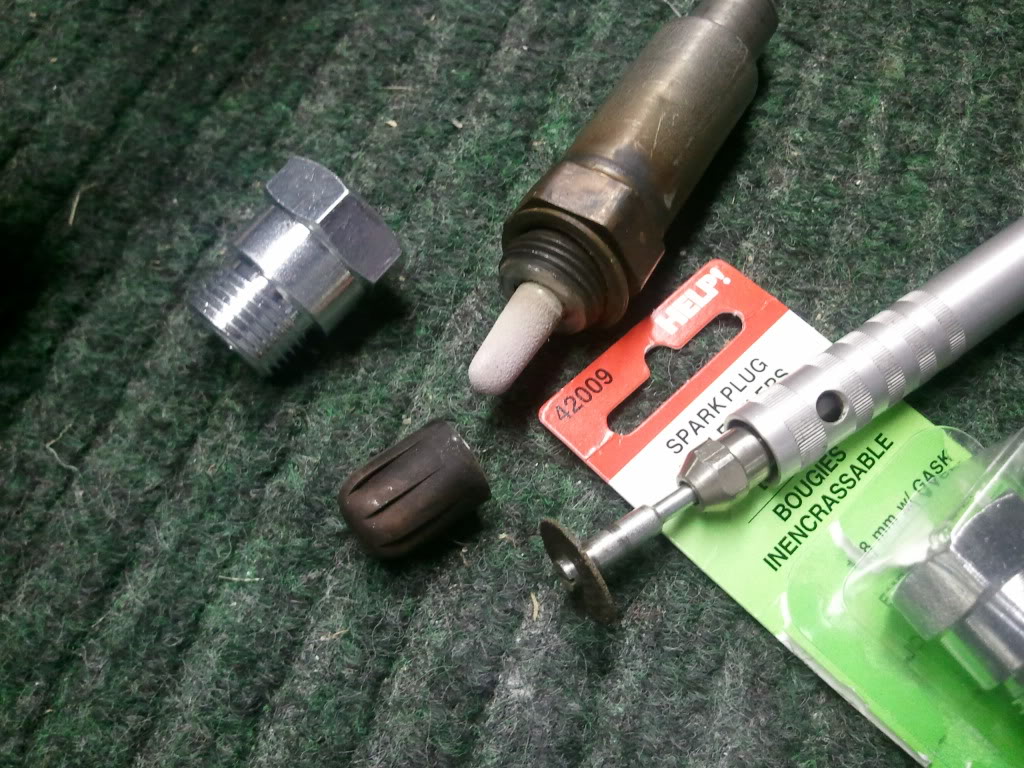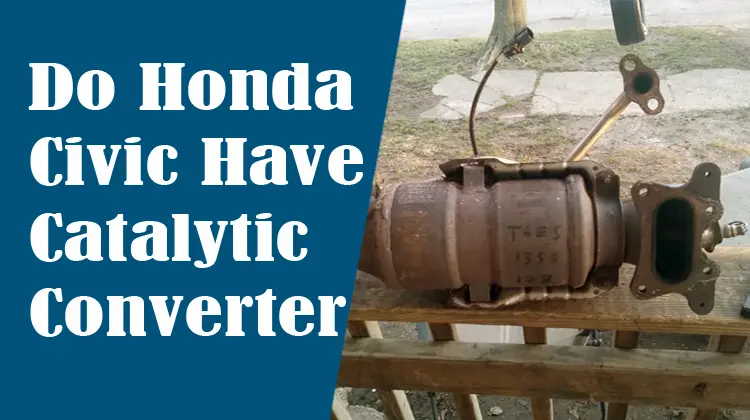Spark plug non-foulers are devices that are placed on the end of the spark plug to keep it from fouling. There are many different brands and types of spark plug non-foulers available on the market today. Most of them claim to work well and be easy to install.
If you’re wondering whether spark plug non-foulers work on oxygen sensors, the answer is yes.
Spark plug non-foulers are designed to prevent fouling of the spark plugs, and they can also be used on oxygen sensors. These devices help keep your engine running smoothly and efficiently by allowing the spark plugs to function properly.
If you’re having trouble with your oxygen sensor, consider using a spark plug non-fouler.
.
How To Fix A Catalytic Converter Check Engine Code With Spark Plug Non Foulers!
90 Degree Spark Plug Non Fouler
A 90-degree spark plug non-fouler is basically a device that is used to prevent spark plugs from becoming fouled with oil, debris, or other deposits. They are most commonly used in high-performance engines where the potential for fouling is greater. There are many different brands and styles of these devices available on the market, but they all serve the same purpose.
The way that a 90-degree spark plug non-fouler works is by creating a barrier between the spark plug and the combustion chamber. This barrier prevents any deposits from reaching the spark plug, keeping it clean and free from fouling. These devices are installed in the engine in place of one of the spark plugs.
The installation process is relatively simple and can be done by anyone with basic mechanical skills. If you are looking for a way to keep your high-performance engine running at its best, then consider installing a 90-degree spark plug non-fouler. These devices are an inexpensive way to protect your investment and keep your engine running strong.
Spark Plug Non Fouler to Pass Emissions
If your vehicle is failing an emissions test, it may be due to high levels of hydrocarbons or carbon monoxide in the exhaust. One potential cause of this is fouled spark plugs. A spark plug non fouler can help to reduce these emissions by allowing the spark plugs to fire more efficiently.
Spark plug non foulers work by creating a small space between the tip of the spark plug and the electrode. This allows the gases that build up on the electrode to be expelled before they can cause problems with firing. The non fouler also acts as a heat sink, dissipating heat away from the spark plug to prevent pre-ignition.
Installing a spark plug non fouler is easy – simply screw it into place between the spark plug and the engine (be sure to use anti-seize compound on the threads). If your vehicle is still failing an emissions test after installing a non fouler, you may need to replace your spark plugs or have your engine tuned up.
Do O2 Sensor Defouler Work
If you own a car, chances are you’ve had to replace the oxygen sensor at some point. But what if there was a way to make your oxygen sensor last longer? That’s where O2 sensor defouler comes in.
An O2 sensor defouler is a small device that attaches to your oxygen sensor and helps “foul” or deposit buildup on the sensor. This can help extend the life of your oxygen sensor and improve its performance. How does an O2 sensor defouler work?
The concept behind an O2 sensor defouler is simple – by preventing deposits from build-up on the oxygen sensor, it allows the sensors to function better and for longer periods of time. Most importantly, it helps keep your car running smoothly and efficiently. There are a few different ways that an O2 senor defouler can be used:
1) Inline with the Oxygen Sensor: The most common way to use an O2 sensor defouler is to install it in line with the existing oxygen sensor. Doing this, it will help “foul” any deposits that may try to build up on the surface of the oxygen sensor over time. This method is typically recommended for those who live in areas with high levels of smog or other pollutants in the air.
Installing an inline O2 sensor defouler is relatively easy – simply unplug the old oxygen sensor, screw in the new one, and then reattach all of the wirings. The entire process should only take about 10 minutes or so. 2) By Adding It To The Fuel Tank: Another way to use an O2 sensor fouler is by adding it directly into your fuel tank.
Doing this will help coat all surfaces of the oxygen sensor with a thin layer of oil, which will prevent any deposits from building up over time. This method is typically recommended for those who live in rural areas where there aren’t as many pollutants present in the air. Adding an Oxygen Sensor Fouling Additive to your fuel tank is also relatively easy: simply pour it into your gas tank when you fill up and then drive as normal.
Most additives come with specific instructions on how much should be used per gallon of gasoline, so be sure to follow those directions carefully.
Spark Plug Non Fouler P0420
If you have a P0420 code, it means that your spark plug non-fouler is not working properly. This can be caused by a number of things, but the most common cause is a bad connection between the spark plug and the wire. Another possible cause is a build-up of carbon on the spark plug itself.
If you suspect that your P0420 code is due to a bad connection, the first thing you should do is check the connections between the spark plug and the wire. If they are loose, tighten them up. If they are corroded, clean them off with some sandpaper or a wire brush.
If your P0420 code is due to a build-up of carbon on the spark plug, you’ll need to clean it off. The best way to do this is with a carburetor cleaner or an aerosolized oven cleaner. Just spray it on and let it soak for a while before scrubbing it off with a brush.
Be sure to wear gloves when doing this, as carburetor cleaner can be pretty harsh on your skin. Once you’ve cleaned off the carbon deposit, reattach the spark plug and see if that clears up your P0420 code. If not, then you may need to replace the entire unit.

Credit: www.corvetteforum.com
What are Spark Plug Non Foulers Used For?
Spark plug non-foulers are devices that are installed in the spark plug holes of an engine to prevent fouling of the plugs. They work by creating a small air gap between the tip of the plug and the bottom of the hole, which allows any deposits that may build up on the plug to be burned off before they can cause problems. Non-foulers are especially useful in engines that are subject to frequent idling or short-duration operation, such as race cars or boats.
How Do You Bypass an O2 Sensor?
An oxygen sensor is an electronic device that measures the proportion of oxygen in the gas or liquid being analyzed. It is a crucial part of the emissions control system in modern vehicles, and it helps to ensure that your car runs as efficiently as possible. If your check engine light is on, it’s likely because your oxygen sensor needs to be replaced.
There are a few ways that you can bypass an oxygen sensor: 1. Use a jumper wire to bypass the oxygen sensor. This method is temporary and should only be used if you need to get your car emissions tested.
2. Replace the oxygen sensor with a dummy sensor. This method is more permanent, but it will cause your car to run less efficiently. 3. Remove the oxygen sensor entirely.
This will disable the emission control system in your vehicle, so it should only be done if you don’t care about emissions standards or fuel efficiency.
How Do You Trick a Catalytic Converter Sensor?
A catalytic converter sensor measures the amount of oxygen in a vehicle’s exhaust gas. The sensor is located in the converter, which is part of the exhaust system.
There are a few ways to trick a catalytic converter sensor, but they all involve tampering with the oxygen levels in the exhaust gas.
One way to do this is to add an extra fuel injector. This will cause more fuel to be burned, and less oxygen will be present in the exhaust gas. Another way to tamper with the oxygen levels is to block off part of the exhaust system so that less gas can escape.
This will also reduce the amount of oxygen in the exhaust gas.
If you’re caught tampering with your catalytic converter sensor, you could face serious penalties from both state and federal authorities. Not only is it illegal, but it’s also unsafe and can lead to costly repairs down the road.
How Do You Make an O2 Sensor Spacer?
An O2 sensor spacer is a device that is installed between the oxygen sensor and the exhaust pipe. The purpose of the spacer is to create a gap between the two surfaces so that the oxygen sensor can accurately measure the amount of oxygen in the exhaust gas. There are many different designs of O2 sensor spacers, but they all serve the same basic function.
The most common type of O2 sensor spacer is made from stainless steel or aluminum. These materials are resistant to corrosion and will not degrade over time like other materials. The spacers are usually available in a variety of sizes to fit different types of exhaust pipes.
To install an O2 sensor spacer, first, remove the old oxygen sensor from its location on the exhaust pipe. Next, clean both surfaces with a wire brush to remove any dirt or debris. Then, place the spacer onto the exhaust pipe and reinstall the oxygen sensor.
Make sure that both surfaces are tight against each other to create a good seal. Once you have installed an O2 sensor spacer, it is important to monitor your vehicle’s performance closely. If you notice any decrease in fuel economy or engine power, have your vehicle inspected by a qualified mechanic as soon as possible.
Conclusion
Spark plug non-foulers do work on O2 sensors, however, they are not a perfect solution. While they will reduce the amount of fouling that occurs, they will not eliminate it completely. In addition, spark plug non-foulers can cause other problems such as decreased fuel economy and increased emissions.





